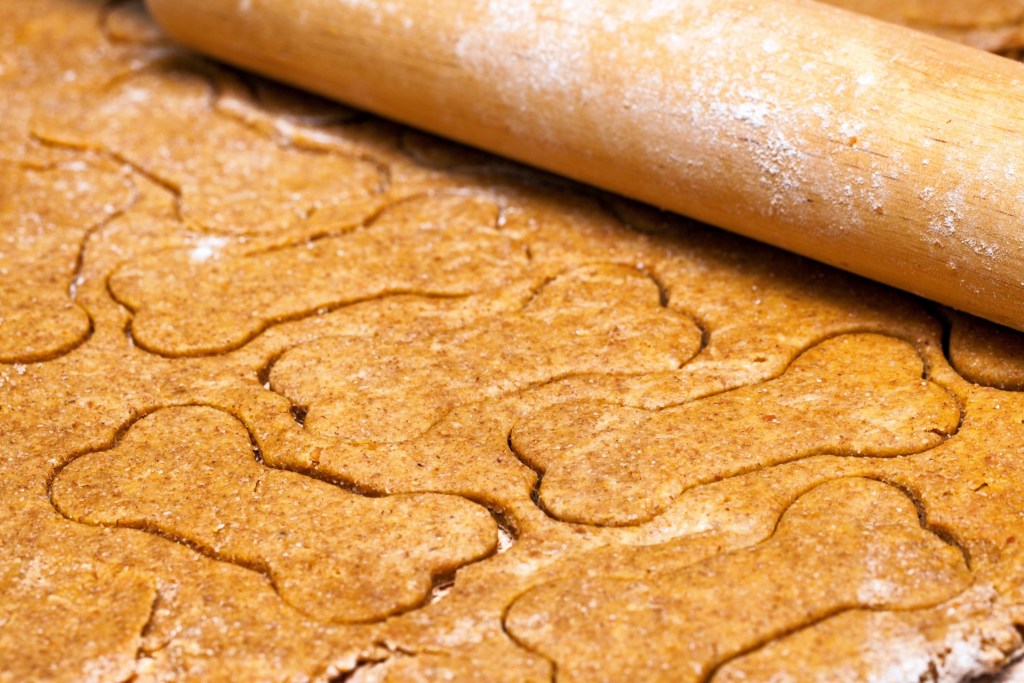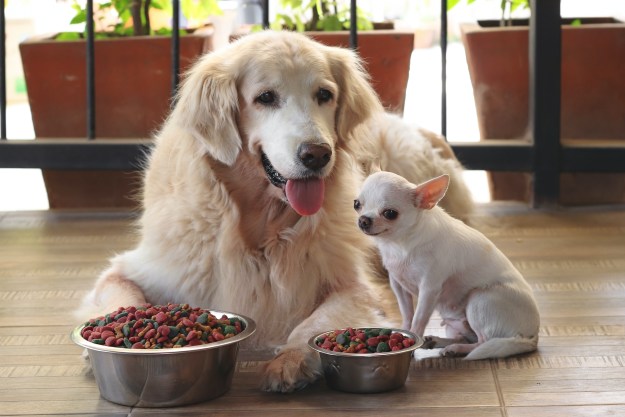Many fur parents are now looking into making homemade dog food for better control over ingredients—and homemade dog treats are no different. Cooking and baking your dog’s treat are always a great way to save some money and spend a nice time caring for your best friend. They are easy to make, allow you to complement your pup’s particular diet to their needs, and you can eliminate filler ingredients and harmful preservatives. The best way to do it is by cooking a large batch and then storing it for use through the upcoming weeks. With proper care and the right preparation, your homemade treats can last a long time. Check out these ideas to create the best dog treats out there.

What affects shelf life in dog treats?
When you use fresh and natural ingredients, the shelf life of your treats will shorten significantly. The benefit of full nutrition without additives comes at the price of a shorter usable life. Most of the recipes can last for up to a week when stored properly and under refrigeration. If you freeze a batch right after cooking, you can extend their expiration date for several weeks.
Baked treats made with natural preservatives like vitamin C and mold inhibitors can last for up to six months in the right conditions. Heat, ventilation, cooking method, list of ingredients, and storage are the most important factors that affect how long your homemade treats will last.
Want to know if dogs should eat spicy food like chili? We’ve got you covered.
Most common homemade treats for your dog
There are some very popular dog-treat recipes that are easy to make and will have your four-legged friend drooling for more. We have put together a list with a few to get you started:
Leftovers Trail Mix: Combine your end-of-the-week leftovers and create a flavorful mix that you can pack for a hike or park snack.
- Pieces of meat with all seasoning washed off, clean potatoes, bland vegetables, and fruits are all great ingredients. Avoid onions, grapes, and raisins.
- Combine all chopped ingredients and spray cooking spray as you spread in a pan.
- Place in the oven at 200 degrees until dried. You can also use a food dehydrator for better results.
- You can freeze the whole batch right after and thaw overnight for daily use.
Basic Dog Biscuits: These classic treats never go out of style. They are simple to make, but you need to invest some time to get them right. Here is what you need:
- 2.5 cups whole wheat flour
- 1 teaspoon salt
- 1 egg
- 1 tablespoon of beef bouillon
- 1 cup beef or chicken broth/stock
- 1/2 cup hot water
- Add one or more of the following: bacon, eggs, oats, liver powder, wheat germ, shredded cheese, bacon bits.
Once you have all the ingredients ready, just follow this simple-step process to create healthy tasty treats that your furry friend will love:
Step 1: Preheat oven to 350 degrees.
Step 2: Heat up water, broth, and dissolve bouillon.
Step 3: Chop any meat, eggs, and other solid ingredients and add to the mix.
Step 4: Let it simmer in super-low heat for about 10 minutes without boiling.
Step 5: Add remaining ingredients one by one and finish with the flour.
Step 6: Stir, mix evenly, and let it cool off. You can place in the fridge for a few minutes.
Step 7: Knead dough thoroughly until it forms a nice ball.
Step 8: Roll it out on a sheet to about 1/2-inch thickness across.
Step 9: Cut into bone shapes with a cookie cutter.
Step 10: Arrange treats on a lightly greased cookie sheet.
Step 11: Place in the oven and cook for an additional 30 minutes.
Step 12: Once done, let them rest and divide them in portions for later use.

How to properly store your treats
Once dry, these treats last about 15 days in the pantry, three to four weeks inside the fridge, and up to six months when you freeze them right after making. But there are a few ways that you can extend the life of your homemade treats just by improving your storage methods. Make sure you follow these best practices and your dog will enjoy those treats for longer:
Step 1: Cool treats completely before storing. Any residual heat left in your baked goods can create condensation inside a storage container. This will generate the ideal conditions for bacteria and mold to grow. It will also take the crunch out of your treats and cut their usable shelf life down.
Step 2: Store dry food in an airtight container. After you cool off your dry baked food, keep it crunchy and free of moisture for up to 10 days. Most likely, your dog will devour all of them well before that.
Step 3: Nothing beats the fridge. Whether it’s used meat, homemade soft treats for a hike, or a large batch of biscuits, keeping the food cold will eliminate a lot of worries and greatly increase the amount of time before your treats are no longer good to eat.
Step 4: Track local weather. Depending on where you live, the weather and temperature might be a big factor in storing your treats. If you have a great AC system, and your home stays consistent through the year, you are good to go. For those that encounter extreme weather, adjust your practices to take in account especially hot days that might shorten your treats’ life span.
Give your love to your dogs in the shape of delicious homemade treats that will last for weeks. They will not only love you more, but you will be making sure that they get all the nutrients and none of the bad stuff. Being a good dog parent takes time and patience, but it is one of the best experiences of your life.
Editors' Recommendations
- How long do dachshunds live? The truth might surprise you
- Are ‘dog years’ really 7 human years? How to calculate your dog’s age
- Taking your dog’s collar off at night: Safe move or safety risk?
- Xylitol is dangerous for dogs: 10 surprising products that contain it as a hidden ingredient
- Is your dog barking nonstop? Here’s how to get your noisy pup under control



